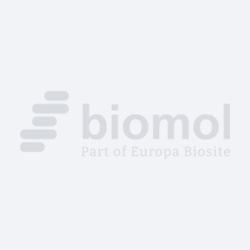Cookie preferences
This website uses cookies, which are necessary for the technical operation of the website and are always set. Other cookies, which increase the comfort when using this website, are used for direct advertising or to facilitate interaction with other websites and social networks, are only set with your consent.
Configuration
Technically required
These cookies are necessary for the basic functions of the shop.
"Allow all cookies" cookie
"Decline all cookies" cookie
CSRF token
Cookie preferences
Currency change
Customer-specific caching
FACT-Finder tracking
Individual prices
Selected shop
Session
Comfort functions
These cookies are used to make the shopping experience even more appealing, for example for the recognition of the visitor.
Note
Show the facebook fanpage in the right blod sidebar
Statistics & Tracking
Affiliate program
Conversion and usertracking via Google Tag Manager
Track device being used

| Item number | Size | Datasheet | Manual | SDS | Delivery time | Quantity | Price |
|---|---|---|---|---|---|---|---|
| ELK-ES7056.50 | 50 µl | - | - |
10 - 14 business days* |
173.00€
|
||
| ELK-ES7056.100 | 100 µl | - | - |
10 - 14 business days* |
290.00€
|
If you have any questions, please use our Contact Form.
You can also order by e-mail: info@biomol.com
Larger quantity required? Request bulk
You can also order by e-mail: info@biomol.com
Larger quantity required? Request bulk
function:May play a role in transcriptional regulation interacting with ISWI. May serve a... more
Product information "Anti-Tip5"
function:May play a role in transcriptional regulation interacting with ISWI. May serve a specific role in maintaining or altering the chromatin structure of the rDNA locus.,PTM:Phosphorylated upon DNA damage, probably by ATM or ATR.,sequence caution:Contaminating sequence. Potential poly-A sequence.,similarity:Belongs to the WAL family.,similarity:Contains 1 bromo domain.,similarity:Contains 1 DDT domain.,similarity:Contains 1 MBD (methyl-CpG-binding) domain.,similarity:Contains 1 PHD-type zinc finger.,similarity:Contains 4 A.T hook DNA-binding domains.,subcellular location:Colocalizes with the basal RNA polymerase I transcription factor UBF in the nucleolus.,subunit:Together with SMARCA5, it forms a complex termed NoRC (nucleolar remodeling complex).,tissue specificity:Expressed at moderate levels in most tissues analyzed, including heart, brain, placenta, lung, skeletal muscle, kidney and pancreas., Protein function: Regulatory subunit of the ATP-dependent NoRC-1 and NoRC-5 ISWI chromatin remodeling complexes, which form ordered nucleosome arrays on chromatin and facilitate access to DNA during DNA-templated processes such as DNA replication, transcription, and repair (PubMed:28801535). Both complexes regulate the spacing of nucleosomes along the chromatin and have the ability to slide mononucleosomes to the center of a DNA template (PubMed:28801535). Directly stimulates the ATPase activity of SMARCA5 in the NoRC-5 ISWI chromatin remodeling complex (PubMed:28801535). The NoRC-1 ISWI chromatin remodeling complex has a lower ATP hydrolysis rate than the NoRC-5 ISWI chromatin remodeling complex (PubMed:28801535). Within the NoRC-5 ISWI chromatin remodeling complex, mediates silencing of a fraction of rDNA by recruiting histone-modifying enzymes and DNA methyltransferases, leading to heterochromatin formation and transcriptional silencing. In the complex, it plays a central role by being recruited to rDNA and by targeting chromatin modifying enzymes such as HDAC1, leading to repress RNA polymerase I transcription. Recruited to rDNA via its interaction with TTF1 and its ability to recognize and bind histone H4 acetylated on 'Lys-16' (H4K16ac), leading to deacetylation of H4K5ac, H4K8ac, H4K12ac but not H4K16ac. Specifically binds pRNAs, 150-250 nucleotide RNAs that are complementary in sequence to the rDNA promoter, pRNA-binding is required for heterochromatin formation and rDNA silencing. [The UniProt Consortium] Recommended dilutions: WB 1:500-2000,IHC-p 1:50-300. Cellular localization: Nucleus, nucleolus . Colocalizes with the basal RNA polymerase I transcription factor UBF in the nucleolus. .
| Keywords: | Anti-Tip5, Anti-BAZ2A, Anti-hWALp3, Anti-KIAA0314, Anti-TTF-I-interacting protein 5, Anti-Bromodomain adjacent to zinc finger domain protein 2A, Anti-Transcription termination factor I-interacting protein 5, Tip5 rabbit pAb |
| Supplier: | ELK Biotechnology |
| Supplier-Nr: | ES7056 |
Properties
| Application: | WB, IHC |
| Antibody Type: | Polyclonal |
| Conjugate: | No |
| Host: | Rabbit |
| Species reactivity: | human, rat, mouse, |
| Immunogen: | The antiserum was produced against synthesized peptide derived from human BAZ2A. AA range:1281-1330 |
| MW: | 210 kD |
| Format: | Antiserum |
Database Information
| KEGG ID : | K15224 | Matching products |
| UniProt ID : | Q9UIF9 | Matching products |
| Gene ID : | GeneID 11176 | Matching products |
Handling & Safety
| Storage: | -20°C |
| Shipping: | +4°C (International: +4°C) |
Caution
Our products are for laboratory research use only: Not for administration to humans!
Our products are for laboratory research use only: Not for administration to humans!
You will get a certificate here
Viewed

